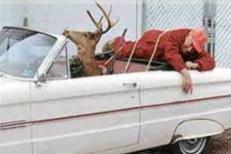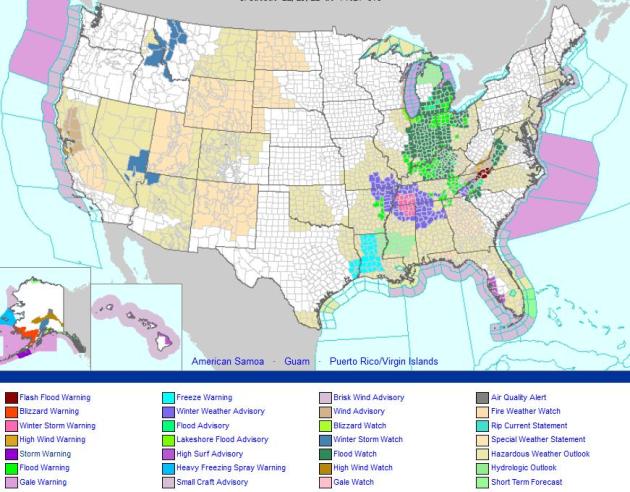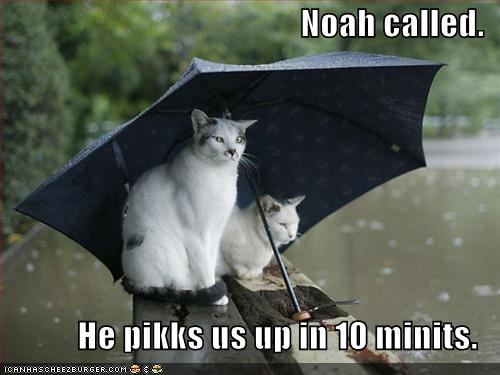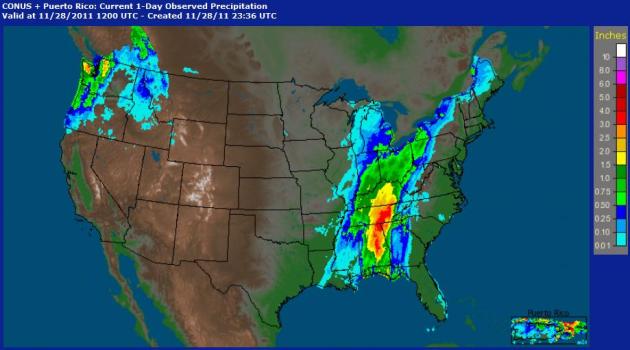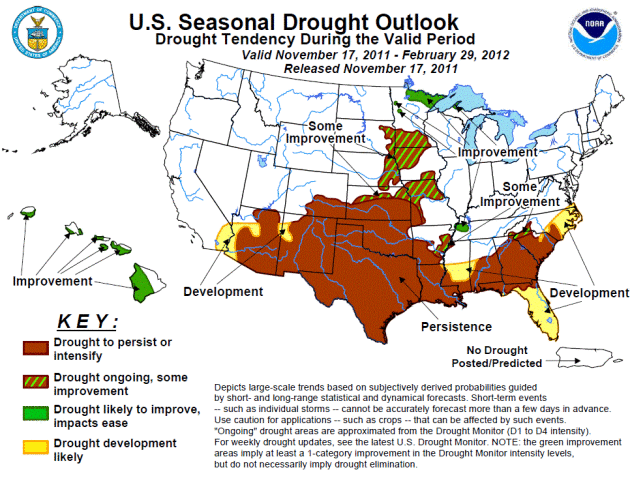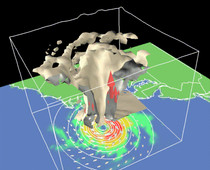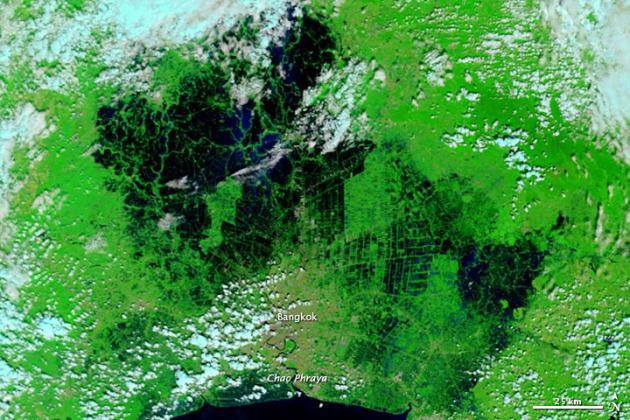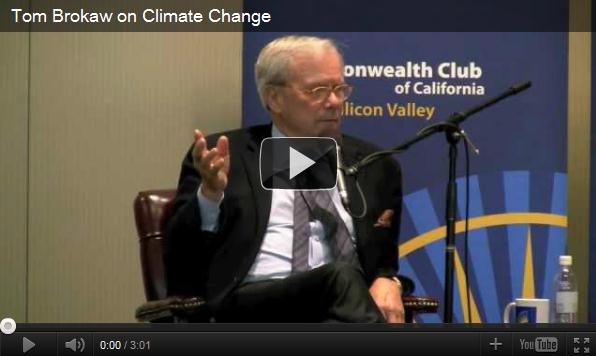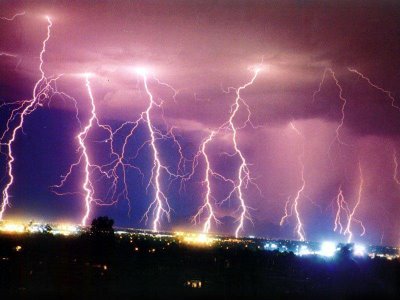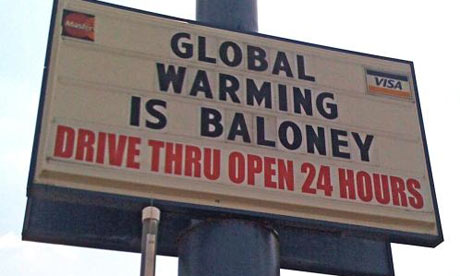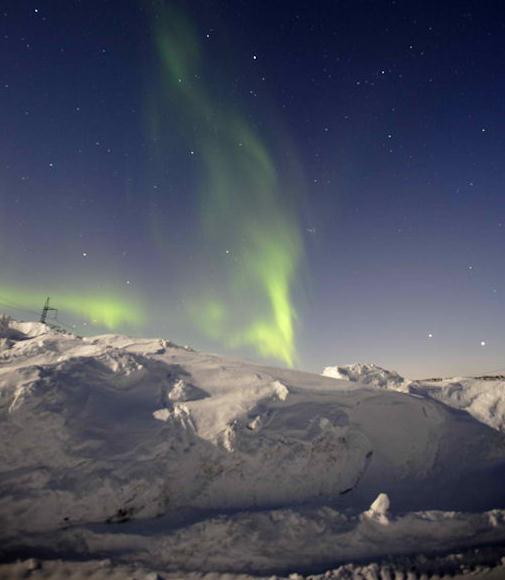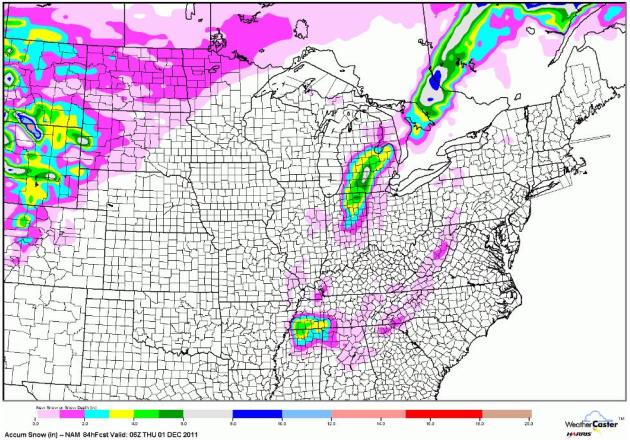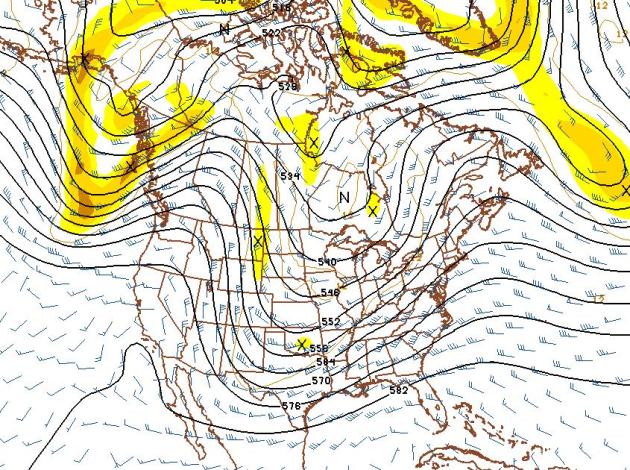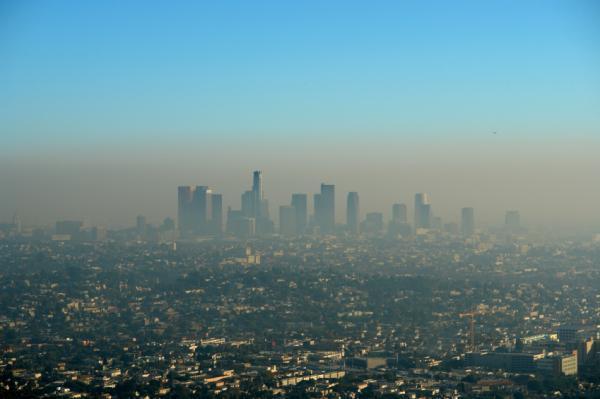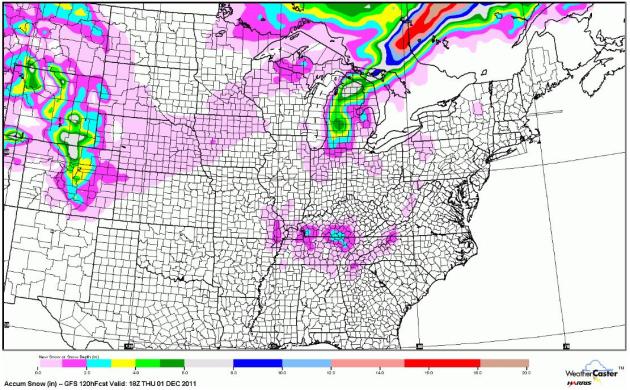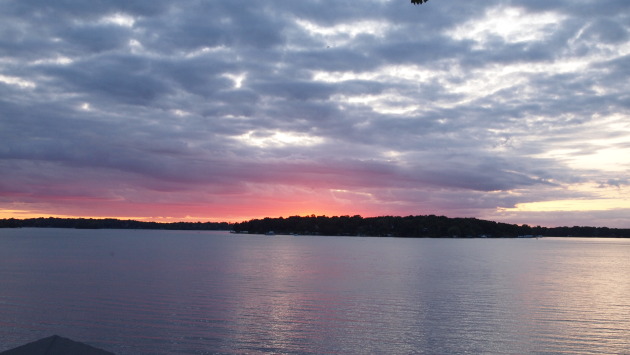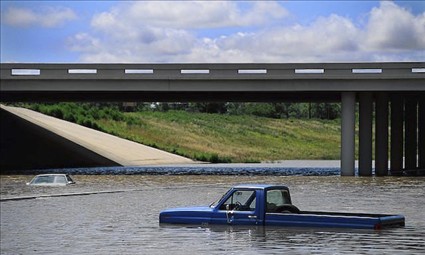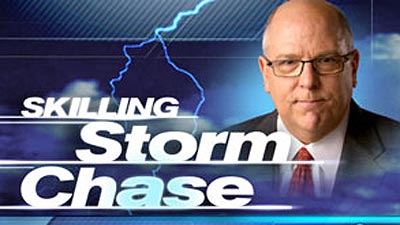 100
100: average number of days every year with 1" or more of snow on the ground in the Twin Cities.
160: average number of days every year with 1" or more of snow on the ground at Grand Marais and Lutsen, on Lake Superior's North Shore. Source:
MN State Climate Office.
 November 26, 1896
November 26, 1896: famous Thanksgiving Day Storm; rain and T-storms in southern Minnesota, snow and blizzard conditions in North Dakota and central/northern Minnesota counties. People caught traveling for the holiday. Severe cold wave as Pokegama Dam sinks to -45 F.
November 27-28, 1905: blizzard strikes Duluth with 60 mph winds. Ships sink in Lake Superior.
November 28, 1960: severe storm and blizzard, dubbed a "no'eastern hammered the Lake Superior shoreline, producing 20-40 foot waves which destroyed shoreline property. Three fee of water floods the streets of Grand Maraie, Minnesota. Winds gust to 73 mph and Duluth records over 1 foot of snow. Thousands of chords of pulpwood washed into Lake Superior. Source:
MN State Climatology Office.
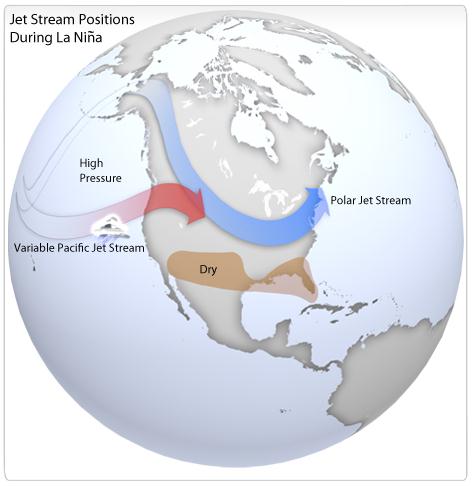 $2 billion
$2 billion: estimated cost of flooding on the Missouri River in 2011. Source: NOAA (story below).
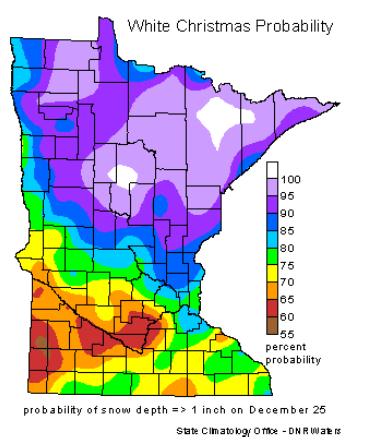 Historical Chances Of A White Christmas
Historical Chances Of A White Christmas. I wouldn't worry too much about Santa and a lack of snow on the ground just yet. The odds are strongly in our favor that we'll have at least 1" or more of snow on the ground by December 24. More details from the Minnesota State Climate Office "Will we have a white Christmas? It's an age-old question that occurs to almost everyone this time of year. The chances of having a white Christmas vary even here in Minnesota. Having a white Christmas is loosely defined as having 1 inch of snow on the ground on Christmas Day. The snow depth at most sites is measured once a day, usually in the morning. The best chances of having a white Christmas is almost guaranteed in the Boundary Waters Canoe Area and a good part of the Arrowhead. The chances decrease to the south and west and the best chance for a "brown" Christmas is in far southwest Minnesota where chances are a little better than 60%. Northern Minnesota is one of the few non-alpine climates in the US where a white Christmas is almost a sure bet (
U.S. White Christmas Probabilities)."

 Where's The Snow?
Where's The Snow? As of last Wednesday most of Minnesota was still snow-free, only 1-2" from near Hinckley to Duluth and International Falls. Click
here for the latest from the Minnesota DNR.
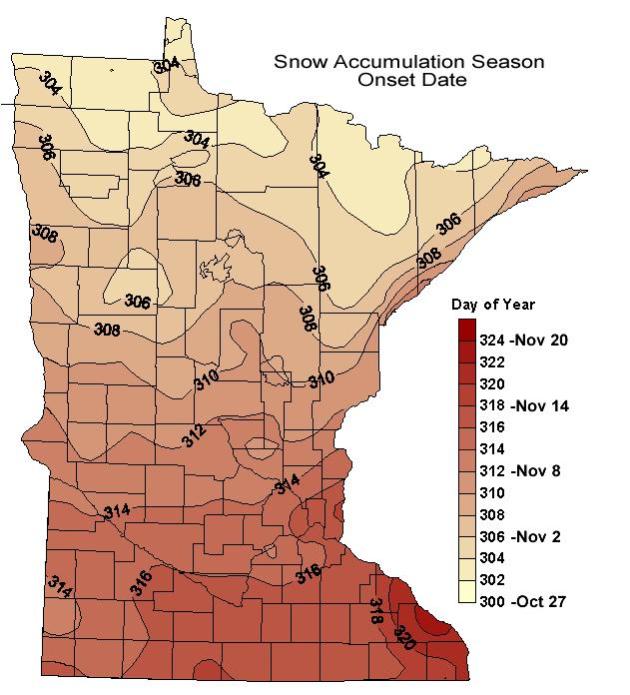 Average Start of Minnesota's "Snow Season".
Average Start of Minnesota's "Snow Season". This
map, courtesy of the Minnesota State Climatology Office, shows the start of the snow season around November 12 in the Twin Cities, based on data from 1971-1996. The first "blowing snow event capable of drifts" usually arrives on October 27 across the Minnesota Arrowhead, but as late as November 20 close to Winona. More details: "
Average start date for the first blowing snow event causing drifts that remain persistent throught the winter. The product was generated using methodology of Tabler and based on the 1971 - 1996 mean monthly temperature records."
Fourth Warmest Thanksgiving On Record For Twin Cities. From the
MPX office of the NWS: "
The high yesterday at Minneapolis-St Paul was 59 degrees, tying the record high for November 24, set in 1990. It was also the fourth warmest Thanksgiving in Twin Cities history. The only warmer Thanksgivings have been November 26, 1914 (a high of 62), November 30, 1922 (a high also of 62), and November 30, 1939 (a high of 60). Please see climate.umn.edu/doc/journal/thanksgiving_climatology.htm for more Thanksgiving Day Climatology. The warmest temperature in Minnesota yesterday was 66 near downtown Redwood Falls. The second warmest temperature in the state was 65, at Canby and the Redwood Falls airport."
Mr. Skilling is apolitical and understands the risks of speaking out on an issue like global warming, but he feels compelled to. “I questioned it, but it’s happening, no doubt,” he said. “The models have said all along that the Arctic latitudes would warm fastest and spark changes throughout the world......“You’d have to have your head buried in the sand not to say there’s something going on. There’s a mosaic of influences, including human effects, and how you rate them is difficult. But it is going on, and we have to study it.” - from a New York Times article on Tom Skilling below.
Snow Accumulation Through Midday Thursday. The GFS model is predicting a coating of slush as far south as the hills of northern Alabama and Georgia, some 2-5" lake effect snowfall amounts over Lower Michigan, more accumulating snow predicted west of Denver. An inch of snow may pile up on the Minnesota Arrowhead, closer to the Boundary Waters. Otherwise, a fairly quiet pattern for most of the USA. Map courtesy of WeatherCaster.
Consistently Warmer Than Average. This graphic from the
Iowa Environmental Mesonet (courtesy of the Iowa State University of Science and Technology) shows the November temperature trend for the Twin Cities. For the month temperatures are running more than 3 degrees above average. 59 F. on Thanksgiving Day is pretty impressive for this latitude.
Warm Thanksgiving Day. Here's a good overview of Thursday's amazing warmth from Mark Seeley in his weekly
WeatherTalk blog: "
November 24th brought the warmest Thanksgiving Day for many Minnesota communities since 1990. Near Redwood Falls the afternoon temperature reached 66 degrees F, just two degrees F shy of the state record for the date (68 F at Wheaton in 1984). But many Minnesota communities reported new record highs yesterday (November 24th) prompting a good deal of outdoor activity for the holiday. Those reporting record highs included: 65 degrees F at Canby; 64 degrees F at Tracy; 61 degrees F at Austin; 60 degrees F at Rochester; 59 degrees F at MSP (tied record); 57 degrees F at Fargo-Moorhead; and 55 degrees F at Detroit Lakes (tied record)."
First Measurable Snowfall Statistics For Chicago and Rockford. From the local NWS office:
CHICAGO...
...122 YEARS OF RECORDS FOR FIRST DATE OF MEASURABLE SNOWFALL.*
...THE AVERAGE DATE OF FIRST MEASURABLE SNOWFALL IS 11/16.
...75 PERCENT OF THE YEARS HAD RECEIVED MEASURABLE SNOWFALL BY 11/25.
...84 PERCENT OF THE YEARS HAD RECEIVED MEASURABLE SNOWFALL BY 12/1.
...EARLIEST DATE OF FIRST MEASURABLE SNOWFALL:10/12/2006.
...LATEST DATE OF FIRST MEASURABLE SNOWFALL:12/16/1965.
LOOKING BACK AT THE 2010-2011 SNOW SEASON...NO MEASURABLE SNOW WAS
RECORDED AT BOTH CHICAGO-O'HARE AND ROCKFORD AIRPORT UNTIL DECEMBER
1ST. IN THE CURRENT FORECAST PERIOD...WET SNOW MAY MIX IN WITH
RAIN SHOWERS LATE SATURDAY NIGHT INTO SUNDAY...BUT NO MEASURABLE
SNOW IS EXPECTED. AFTER THAT...THERE IS A DISTINCT POSSIBILITY
THAT THE FIRST MEASURABLE SNOWFALL OF THE SEASON MAY NOT OCCUR AT
CHICAGO AND ROCKFORD UNTIL AFTER DECEMBER 1ST
Soggy Pattern For California. I still don't see any significant storms (rain, snow or ice) for the Upper Midwest anytime soon, the core of the jet supressed to the south, favoring storms for the west coast, and parts of the southern and eastern USA. Thanksgiving rainfal amounts above courtesy of the San Francisco National Weather Service office.
Hurricane Kenneth Sets Record For Eastern Pacific Storms. The
Summit County Citizen's Voice has more on last week's record, Category 4 hurricane in the eastern Pacific: Measuring 300 miles across and generating sustained winds of 145 mph,
Hurricane Kenneth this week set a record as the latest major hurricane in the eastern Pacific Ocean. More hurricane records are
online here. Dr. Jeff Masters, of Weather Underground, also commented on the unusual nature of the 2011 eastern Pacific hurricane season
in his blog. Normally, La Niña conditions in the Pacific suppress the formation of intense hurricanes.
 Hurricane Season A Sleeper In Southeast. Savannahnow.com
Hurricane Season A Sleeper In Southeast. Savannahnow.com has the story: "
Hurricanes are like real estate. The three things that matter most about them are location, location, and location. So as the 2011 hurricane season comes to an end Nov. 30, it looks like a non-event from Savannah’s perspective. The only tangible effects here were high surf and some beach erosion from Hurricane Irene in late August. Otherwise, there was barely a leaf blown out of place. But it was an above-average season with massive damage elsewhere, especially in the Northeast, which is often spared the effects of tropical weather. Overall, the season racked up 18 named storms, the last of which was November’s Tropical Storm Sean. Seven of the storms were hurricanes and three of those were major hurricanes." Image above courtesy of NASA.
Florida Escapes Hit By Major Hurricane For Another Year. The story from
Tampa Bay Online: "
The squiggly lines of storm paths are everywhere – in the Atlantic Ocean and even the Gulf of Mexico. But none, thankfully, crossed the state of Florida. During a busy hurricane season that saw 18 named storms, with seven of those morphing into hurricanes, the Sunshine State was not impacted a single time. "It was an incredibly good year for us," said Michelle Palmer, deputy state meteorologist for Florida. "We like calm seasons." The only names we didn't make it to in the 2011 list were Tammy, Vince and Whitney. And while hurricane season doesn't officially end until Wednesday, forecasters say we have likely seen the last of tropical activity for the year." (Photo courtesy of NASAWatch).
How To Steer Clear Of Flood-Damaged Cars. Looking for a (gently) used car? If you find a deal/price that's too good to be true, check to see if the car or truck was in a flood of any kind. Here's a harrowing story from
The Republic: "
ORLANDO, Fla. — The hurricane season is almost over for 2011, suggesting that we no longer need to worry about one of the major problems caused by severe storms — flooded cars. Right? Wrong. Unscrupulous brokers have learned that it isn’t smart to try to sell flood-damaged cars just down the road from a major flood. It isn’t that hard to do a quick, cursory reconditioning of a damaged car in one place, then ship it — or a whole truckload of poorly reconditioned cars — to another city or state where consumers wouldn’t suspect. Be aware, too, that it doesn’t require a major, news-making flood to cause damage. A neighborhood flash flood can send vehicles with serious water damage onto the market." (photo above courtesy of MSN, which has more good information on spotting flood-damaged vehicles
here).
 Missouri River Flood Drama Likely Took Direction From La Nina
Missouri River Flood Drama Likely Took Direction From La Nina. Did a strong La Nina cooling of Pacific Ocean water last spring contribute to record flooding on the Missouri River?
NOAA's Climate Watch has the story: "
The Missouri is the continent's longest river. It trickles out of the mountains in Montana and flows east and south toward the Mississippi. Its waters are essential to the basin's farmers and ranchers, who raise 46% of the wheat, 22% of the corn, and 34% of the cattle in the United States. The river is also home to a system of dams, levees and spillways meant to insulate people living in the basin from the river's extremes. But in 2011 they couldn't keep the Missouri completely under control. Beginning in late spring and continuing through the summer, floodwater spilled over the Missouri's banks onto fields and towns, reaching up to five miles from the river's normal edge. The waters finall started to recede this fall, giving the basin's residents their first glimpse of the $2 billion in damages from this slow-moving catastrophe."
For (Tom) Skilling, There Is No Such Thing As Bad Weather. Let me tell you a quick story about Chicago TV meteorologist Tom Skilling, one that sheds light on what a great (genuine) guy he really is. When I was a wide-eyed meteorology student at Penn State I dropped by the WGN-TV studios in Chicago for a quick tour. Not only did Tom show me all his meteo-toys at the office, but he took my friend and me to his Chicago townhouse, where he had converted a guest bedroom into a weather center, complete with "NAFAX" maps plastered on every wall. I was in weather-heaven. He was and is the epitome of a weather geek/enthusiast - and I say that with admiration and genuine respect. Tom is still at the top of his game. He still makes time to get others excited about meteorology. That, and he doesn't take himself too seriously. If I sound like a groupie, well, maybe, in this (rare) instance, I am. I mean, this guy bought a place in Anchorage so he could be CLOSER TO SNOW! Yes, Tom Skilling is the real deal and it's great to see nice guys (who are passionate about what they do)....do well. The
New York Times agrees that Mr. Skilling is a force of nature: "
There are many reasons for Chicagoans to wonder what in the name of Harry Volkman is going on with their weather. A blizzard in February dumped 21 inches of snow on the city and closed Lake Shore Drive for three days. A heat wave in July delivered the first 100-degree temperatures in six years. Forecasters are warning of arctic-like conditions in the months ahead — it is going to be another brutal winter. To make sense of it, people are turning to Mr. Skilling in ever greater numbers, if 52,000 Facebook fans and 12,000 Twitter followers are any indication. Since Mr. Skilling succeeded Mr. Volkman as WGN’s chief meteorologist in 1978, the folksy, 59-year-old has become the undisputed king of Chicago weather, with a million-dollar salary, a 12-person staff and stature at his station that is unmatched in the market. His amiable, enthusiastic demeanor is a perfect delivery vehicle for the knowledge and passion he brings to his subject."
Is Apple Working On iTV? It's still pure speculation and conjecture at this point, but the Apple fan boys (myself included) are praying that Apple will ultimately improve on the television experience. I found this blurb interesting from
mashable.com:
"Apple’s relationship with Samsung has deteriorated, and the Cupertino giant may be working with Sharp on the next generation displays for upcoming devices such as the iPad 3, iPhone 5 and a little something called iTV, claims Jefferies analyst Peter Misek. Since all of these products are unofficial and unannounced, such predictions fall into the realm of speculation. However, Misek claims that the mythical iTV – a future “smart TV” product from Apple that has been the subject of many recent rumors – is a real thing, and Sharp is working on modified amorphous TFT LCD panels for the device."
NASA Curiosity Rover On Its Way To Mars. Here's the story from
Engadget.com: "It's been described by the scientist in charge as "the most complex mission that has ever been undertaken to the surface of another planet," and NASA's Mars Science Laboratory spacecraft is now well on its way to Mars. An Atlas V rocket carrying the
Curiosity rover launched from Cape Canaveral this morning, and a successful separation of the craft occurred in space shortly thereafter, kicking off a journey to Mars that's expected to end with a rocket-powered descent to the planet in August of next year. (Image above courtesy of NASA).
 Climate Stories...
Climate Stories...

What's New (And What Isn't) In IPCC's Report On Extreme Weather? Inside Climate News has the story:
"Severe weather in the United States and elsewhere has grown more frequent since 1980. Contributing to the shift is the accumulation of heat-trapping carbon dioxide in the air from human activities—though teasing out the exact contribution is tricky..... Droughts are more frequent and longer, particularly in southern Europe and West Africa, it found. As well, the frequency of days with heavy precipitation is up in some regions (warmer air holds more moisture). Tropical cyclones, the generic term for typhoons and hurricanes, have shifted poleward in recent years; and, as a result, storms have made landfall in areas that previously didn't lie in the tracks of cyclones. The IPCC said it is "likely"—a 66 percent to 100 percent probability—that the temperature and precipitation trends mentioned above are caused by a rise in greenhouse gas emissions from human activities like burning fossil fuels and deforestation. They are less certain about cyclones because of spotty historical records." Photo courtesy of NOAA.

. Here's an excerpt from
Der Spiegel: "
The report says that one "very likely" trend is that heat waves will occur more frequently and last longer around the world and that an increase in the frequency and magnitude of warm days and nights around the globe is "virtually certain." By the end of the century, the report predicts, temperatures on days with extreme heat will be between 2 and 5 degrees Celsius (3.5 and 9 degrees Fahrenheit) higher than they are today. The report is more cautious in what is says about heavy rainfalls. "There is medium confidence," it says, "that, in some regions, increases in heavy precipitation will occur despite projected decreases of total precipitation in those regions."
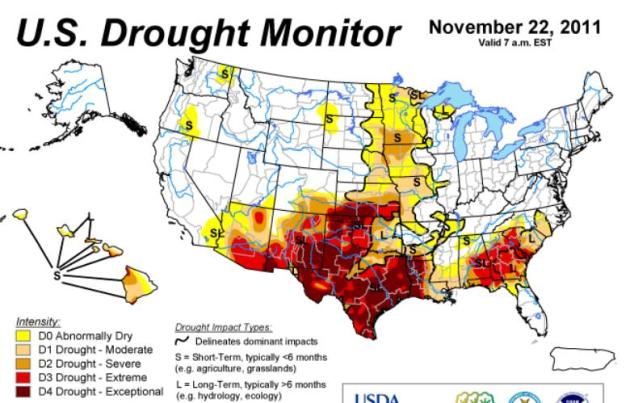 Drought Puts Damper on Tree Farmer's Christmas
Drought Puts Damper on Tree Farmer's Christmas.
AP has the story. Here's an excerpt: "
NEW CANEY, Texas (AP) — Dry, brown grass crunches underfoot as David Barfield walks through his 45-acre Christmas tree farm pointing at evergreens covered with brittle, rust-colored needles. "Dead tree, dead tree, dead tree," he says, shaking his head at dry timber he hoped would be chopped down by parents with excited children. Instead, Mother Nature delivered the Grinch in the form of a historic drought that has killed thousands of trees across Texas and Oklahoma. Some died of thirst. Others were destroyed by wildfires, whose breadth and intensity were magnified when wind swept the flames across parched landscape."
